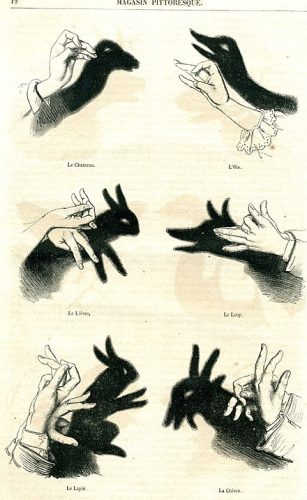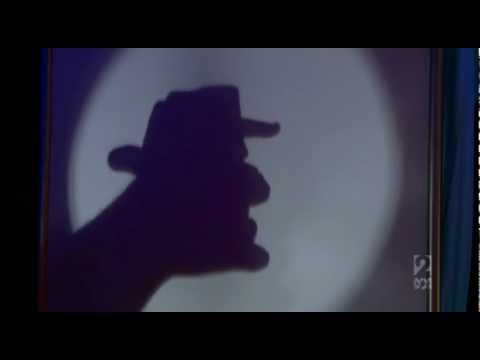Shadowgraphy or ombromanie is the art of performing a story or show using images made by hand shadows. It can be called “cinema in silhouette”. Performers are titled as a shadowgraphist or shadowgrapher.

The art has declined since the late 19th century when electricity became available to homes because light bulbs and electric lamps do not give off good shadows and because cinema and television were becoming a new form of entertainment. Shadows are greatly defined by candlelight; therefore hand shadows were common in earlier centuries.
Shadows have existed since the existence of objects obstructing light, so it is hard to say when the art was first used by humans for entertainment. It could have been practiced by ancient or later humans, but it probably originated in the Far East. The French entertainer Félicien Trewey was interested in the art of Chinese shadow puppetry called Ombres Chinoises(Known in China as the pi ying xi(皮影戏)), which means “Chinese shadows”. He popularized the art of hand shadows when he developed shadows of famous silhouettes. It then became popular in Europe in the 19th century.
It’s still a neat way to entertain kids.
